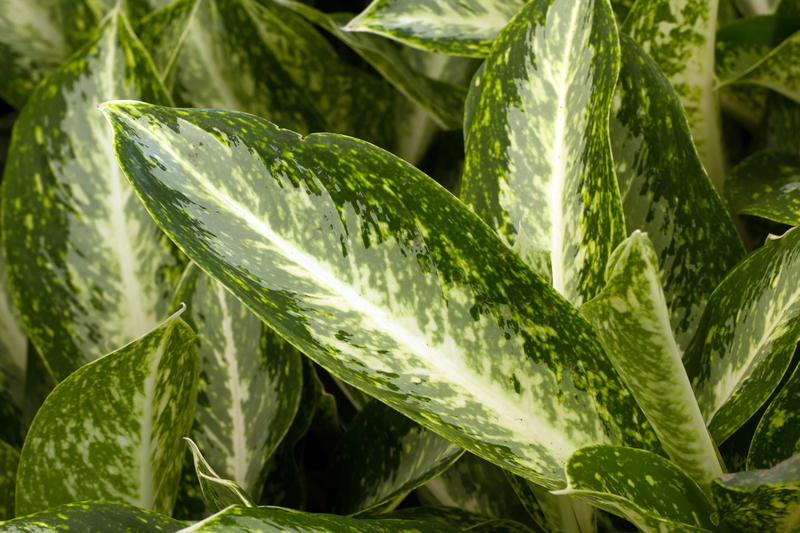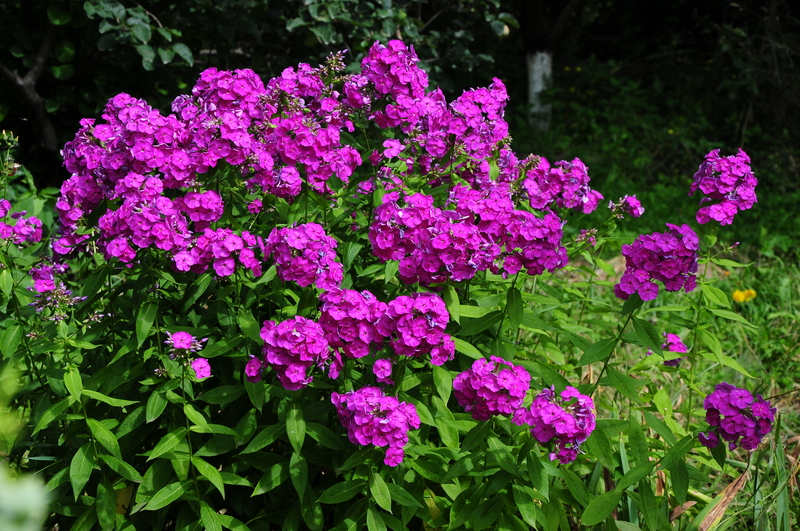Revolutionize Your Home with Vertical Gardening
Posted on 01/06/2025
Revolutionize Your Home with Vertical Gardening
Are you dreaming of lush greenery, vibrant edible plants, or a stunning wall of flowers, but limited by space? Vertical gardening is the transformative solution! Vertical gardening is a groundbreaking approach that lets anyone morph even the smallest corner of their dwelling into a spectacular nature display. From balconies and patios to kitchen walls and urban rooftops, vertical gardens open a nature-filled world, even in the heart of the busiest cities.
What is Vertical Gardening?
Vertical gardening, sometimes called living wall gardening, is the technique of growing plants upward, using vertical space instead of traditional horizontal garden beds. These innovative gardens utilize structures like trellises, shelves, hanging pots, hydroponic systems, wall-mounted planters, or even repurposed everyday items, allowing you to grow anything from herbs to flowers to vegetables without taking up valuable floor space.
Benefits of Vertical Gardening
- Maximizes limited space - Perfect for urban apartments and small homes.
- Improves air quality by filtering toxins and releasing oxygen indoors.
- Reduces the urban heat island effect when installed outdoors.
- Enhances aesthetics - Transforms dull walls into living works of art.
- Promotes relaxation and well-being with soothing green environments.
- Increases home property value with unique eco-features.
- Saves water - Vertical gardens need less water than traditional gardens thanks to efficient irrigation systems.
- Easy access for all ages - Raised panels and containers reduce bending and kneeling.
- Discourages pests and diseases by improving air circulation around plants.

Why Choose Vertical Gardening for Your Home?
Vertical gardens aren't just a fad--they're a customizable, sustainable, and visually compelling way to bring nature indoors or transform small outdoor areas. If your home lacks a yard or you simply want to create a dynamic focal point, a vertical garden wall offers unmatched potential. It allows you to:
- Grow your own food efficiently: Fresh herbs, edible greens, and veggies at your fingertips.
- Improve interior design: Living walls provide a natural, organic touch that no artwork can replicate.
- Control your growing environment: Indoors, you protect plants from harsh weather or pests.
- Reduce your carbon footprint by growing produce at home and cutting down on grocery purchases.
Getting Started: Planning Your Vertical Garden
1. Assess Your Space
- Do you prefer an indoor or outdoor vertical garden?
- How much sunlight does your chosen spot receive?
- Are there water sources nearby for easy irrigation?
- Is the surface (like a wall or fence) strong enough to support planters and soil?
Tip: South-facing walls typically get the most sunlight--ideal for sun-loving plants!
2. Decide What to Grow
- Herbs (basil, mint, parsley, thyme) thrive in small containers and are easy to access for cooking.
- Leafy greens (lettuce, spinach, arugula) grow quickly in vertical panel systems.
- Flowers (petunias, nasturtiums, pansies) add bold color and fragrance.
- Succulents (sedum, echeveria, aloe) require less maintenance and minimal watering.
- Vegetables (cherry tomatoes, peppers, beans, strawberries) do well in larger, deeper planters.
Select plants with similar water and light needs for each section or layer of your vertical garden.
3. Choose the Right Vertical Gardening System
There are endless ways to build your vertical garden. Here are the most popular methods:
- Wall-mounted planters: Attach pots, pockets or rails directly to a wall or fence.
- Freestanding vertical planters: Portable units with stacked tiers, perfect for patios or rented homes.
- Pallet gardens: Recycled wood pallets provide a budget-friendly, rustic touch.
- Hanging systems: Macrame pockets, DIY bottle towers, or tiered baskets fit well in kitchens and on balconies.
- Hydroponic vertical systems: Modern, soil-free planters for high-efficiency growing indoors.
Your choice will depend on your space, budget, and favorite plants.
How to Build a Vertical Garden Step-by-Step
1. Gather Materials and Tools
- Support structure (wall hooks, trellis, or framework)
- Containers or panels suited for your design
- Quality potting soil or hydroponic media
- Plants or seeds
- Waterproof backing (for indoor walls)
- Drip irrigation or self-watering systems (optional, but makes maintenance easy)
- Gardening tools: trowel, gloves, watering can
2. Install Your Support Structure
Securely attach the support structure to your chosen wall, fence, or frame. Ensure it's level and can bear the weight of wet soil and plants. For indoor living walls, install a waterproof layer to protect your surfaces from moisture damage.
3. Arrange Your Planters
Place larger or trailing plants towards the top for a balanced aesthetic, and cluster similar water- and sun-loving species together. Allow easy access for care and harvesting.
4. Fill and Plant
- Fill containers with high-quality, well-draining potting mix.
- Carefully plant your chosen varieties according to their spacing needs.
- Water thoroughly after planting to help roots settle.
5. Install Irrigation (Optional but Recommended!)
- Drip systems are efficient, delivering water directly to roots.
- Self-watering vertical planters reduce the hassle of daily watering in indoor vertical gardens.
- Manual watering is fine for small installations using a watering can or spray bottle.
6. Maintenance and Care
- Check soil moisture regularly--vertical gardens may dry out faster than traditional beds.
- Fertilize every few weeks with an organic liquid feed.
- Prune and harvest to encourage vigorous, tidy growth and prevent overcrowding.
- Inspect for pests--look for insects or signs of disease, and treat accordingly.
- Rotate plants seasonally if growing outdoors to maximize performance as temperatures change.
Creative Vertical Gardening Ideas for Every Home
- Kitchen herb wall: A vertical rack of aromatic herbs right by your cooking area.
- Living room statement wall: Frame your TV or bookshelf with cascading green foliage.
- Edible balcony: Stack strawberries, lettuce, and peppers for a productive mini-farm.
- Bathroom planter: Grow calming ferns or humidity-loving orchids for a spa-like retreat.
- Entryway showpiece: Greet guests with a vibrant wall of flowers at your front door.
- Urban privacy screen: Use climbing plants like ivy or jasmine on a trellis for natural screening.
- Kids' sensory garden: Plant soft lambs' ear, fragrant mint, and edible nasturtiums for hands-on discovery.
Best Plants for a Vertical Garden
- Herbs: Basil, cilantro, chives, oregano, sage, thyme, mint
- Leafy greens: Lettuce, arugula, spinach, Swiss chard
- Vegetables: Cherry tomatoes, peppers, strawberries, dwarf beans, peas
- Ornamentals: Ferns, pothos, philodendron, succulents, spider plant, tradescantia
- Flowers: Nasturtium, petunia, begonia, fuchsia, pansy
Tip: Combine trailing and upright species for visual interest and best use of space. Use annuals if you like to change your display every year, or perennials for a lasting green feature.
Common Challenges & Solutions in Vertical Gardening
-
Uneven water distribution:
- Tip: Install a drip irrigation system for consistent watering, especially for larger vertical gardens.
-
Sunlight issues:
- Choose shade-tolerant plants like ferns or snake plants for low-light areas.
- Rotate vertical planters to ensure even light exposure.
-
Pests and diseases:
- Encourage beneficial insects like ladybugs and use natural pest deterrents.
- Space plants to promote air flow and reduce mildew risk.
-
Heaviness of soil and water:
- Use lightweight potting mixes and ensure structures are securely installed.
- Opt for high-quality vertical gardening kits tested for home use.
-
Maintenance concerns:
- Choose low-maintenance plants if you travel often or have a busy schedule.
- Consider self-watering systems for ease of care.
Tips for Creating Stunning Vertical Gardens
- Plan your design--sketch your garden on paper first, considering plant heights, colors, and texture combinations.
- Start small--a single column of herbs or a compact succulent panel is perfect for beginners.
- Mix decorative and edible plants for year-round interest and practical beauty.
- Use recycled materials--old ladders, shoe organizers, or pallets can be transformed into unique vertical planters.
- Illuminate your garden at night with LED grow lights or fairy lights for extra ambiance.
Why Vertical Gardening is Eco-Friendly
Embracing a vertical garden at home isn't just about looks--it's a step toward a greener, healthier future:
- Reduces food miles - Grow what you eat and limit supermarket trips.
- Improves indoor climate by regulating temperature and trapping dust.
- Utilizes recycled/recyclable materials like plastic bottles and pallets.
- Decreases stormwater runoff when installed outdoors.
- Increases urban biodiversity by supporting pollinators and other wildlife.

Take the Leap: Revolutionize Your Home with Vertical Gardening Today!
Vertical gardening is more than just a trend; it's a sustainable lifestyle revolution that fits all homes and budgets. Start small or go bold with a living wall masterpiece; either way, you'll enjoy cleaner air, gorgeous views, fresh produce, and a daily dose of nature's magic. Whether you have a sunny window, a tiny balcony, or a blank outdoor fence, the possibilities of vertical gardens are endless.
Now's the time to transform your space--embrace the vertical gardening revolution and discover the joy of growing up, not out!
FAQs About Vertical Gardening at Home
- Can I start vertical gardening indoors? Yes, provided you have enough light or supplement with grow lights. Kitchen walls, sunny hallways, and bathrooms are all great options.
- What is the best vertical garden system for beginners? Freestanding tower planters or wall-mounted fabric pockets are user-friendly and affordable.
- Do I need special soil or fertilizer? Use a lightweight, well-draining potting mix and feed with organic liquid fertilizer every few weeks.
- Is vertical gardening suitable for renters? Absolutely! Many systems are portable or easily installed and removed without damaging walls or floors.
- How can I keep my vertical garden well-watered? Consider a drip irrigation or self-watering system, or simply check soil moisture regularly and water as needed.
Conclusion: Elevate Your Home Life with a Vertical Garden
Revolutionizing your home with vertical gardening isn't just about saving space--it's about cultivating wellness, beauty, and sustainability right where you live. Veggies for your plate, herbs for your kitchen, or flowers for your soul--no matter your vision, a vertical garden makes it possible. Start yours today and transform your everyday environment, one upward-growing plant at a time!

